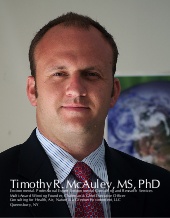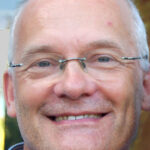DAY 3
COVID-19
Biobanking During the COVID-19 Pandemic

Jim Vaught, Central South University & Children's Hospital of Shanghai
The language of probability and uncertainty

Karl Halvor Teigen, University of Oslo, Norway
Abstract:
What happens when a “likely” outcome becomes “uncertain”, and what does it mean that a pandemic “can” claim 500 000 lives? Both experts and lay people use a variety of linguistic terms (verbs, adjectives, and nouns) to communicate the status and exactness of their knowledge. Many attempts have been done to translate such phrases into numeric probabilities, descriptively (by asking people to quantify the meanings of such terms) or prescriptively (by offering standards for how they should be used). But these phrases have also non-numeric connotations that raise problems for the translation approach. For instance, probability and uncertainty phrases point in opposite directions, creating framing effects. Phrases also differ by suggesting external (aleatory) or internal (epistemic) attributions of uncertainty, and they are sometimes used to describe the extremity of outcomes rather than their likelihood. For instance, certain sometimes denotes the lowest value in a distribution, likely a middle value, and possible the highest one, with unlikely referring to values outside of the expected range. Predictions of multiple outcomes lead typically to overestimates, and indicate that most people’s intuitions about chance are modelled on the binary case
The Advent of COVID-19; where periodontal research has identified therapeutic targets for severe respiratory disease

Howard Tenenbaum, University of Toronto, and Mount Sinai Hospital, Toronto
Abstract:
The Advent of COVID-19; where periodontal research has identified therapeutic targets for severe respiratory disease
Elaine Cardoso, Noah Fine, Michael Glogauer, Francis Johnson, Michael Goldberg, Lawrence Golub, Howard C Tenenbaum
The pathophysiology of SARS-CoV-2 infection is characterized by rapid virus replication and aggressive inflammatory responses that can lead to acute respiratory distress syndrome (ARDS) only a few days after the onset of symptoms. Albeit not yet clearly elucidated, it is strongly suspected that a dysfunctional immune response, rather than direct viral damage is the cause of SARS-CoV-2 infection induced morbidity (short and longer term) and mortality associated with a massive infiltration of neutrophils in the lungs, not unlike that seen in patients with influenza. It is at this point that the juncture between so-called ‘dental research’ (really biomedical research) has shaped a clear nexus with medical research insofar as the management of seemingly disparate diseases is concerned; in this case COVID-19. A form of therapy termed Host Modulation Therapy (HMT) has been pioneered in dentistry and in particular periodontology as a successful therapeutic approach for management of chronic periodontal and refractory periodontal diseases (neutrophil-mediated disorders). This therapy, pioneered by our group (notably Dr. Golub’s group) is based on the use of tetracycline-based molecules to downregulate the activities of neutrophil-derived matrix metalloproteinases (MMPs) as well as suppression of inflammatory cytokines, and for quenching of reactive oxygen species (ROS), all of which contribute to the breakdown of periodontal tissues but also other tissues being attacked by dysregulated inflammation-mediated destruction of tissues observed in periodontitis and ARDS (including vasculitides). In relation to periodontitis, work has focused on the use of subantimicrobial dose doxycycline (Periostat®), but higher dose use over a short term is certainly feasible when treating extreme cases of inflammation. And this has also led to the development of an effective treatment for rosacea using subantimicrobial dose doxycycline slow release form (Oracea®/Aprillon®). Along similar lines, our group has explored the effects of resveratrol and curcumin in downregulating ROS-mediated oxidative stress, inhibition of ROS production, and inhibition of pro-inflammatory cytokine formation, which the data will show protects tissues under inflammatory attack. Our data show that resveratrol effectively blocks the harmful effects of aryl hydrocarbons found in cigarette smoke and the environment on connective and other tissues which could be very important inasmuch as smoking represents a significant comorbidity for COVID-19 and other oral and systemic diseases. Briefly put, we have shown that resveratrol and curcumin inhibit the inflammatory process significantly preventing bone loss and even leading to regeneration of lost bone, the latter occurring even in an ongoing infectious environment. We now have evidence from collaborators and others showing that by using this approach, it is possible to block the development of ARDS. This activity is independent of the type of infectious virus but importantly it is should be effective on SARS CoV-2. Moreover, there is also evidence showing that tetracyclines as well as resveratrol block replication of SARS CoV-2 as well as other respiratory viruses. We propose that the combination of treatment modalities initially described for periodontitis will reduce morbidity, mortality dramatically and possibly longer-term sequelae of SARS-CoV-2 disease, namely COVID-19.
A Novel Multiplex Paired-Pool droplet digital PCR (MP4) assay for large-scale testing for SARS-CoV2

Mark Zabel, Colorado State University
Infectious Disease
Laboratory diagnosis of Strongyloides infection: challenges and new detection tools

Rahmah Noordin, University Sains Malaysia
Rewiring fetal neurodevelopment by maternal bacterial cell wall components
Elaine Tuomanen
Abstract:
During infection, the molecular vocabulary encoded in bacterial cell walls, known as PAMPs (pathogen associated molecular patterns), presents a diverse library of inflammatory signals to the innate immune system. However, at the maternal/fetal interface, neurons respond to bacterial cell wall components even in the absence of infection. Bacterial cell walls from the mother cross the placenta, accumulate in the fetal brain and induce abnormal brain architecture marked by a 50% expansion of the developing cerebral cortex and permanent abnormal cognitive behavior after birth. In the developing fetal nervous system, this proliferative response is triggered in a restricted temporal window of vulnerability and requires the innate immune receptors TLR2/6. Cell walls induce anomalous proliferation of the pool of neural progenitor cells by altering the cell cycle at early stages of neurogenesis resulting in an overabundance of all cortical layer neurons over time. Taken together, these events define a non-canonical, PAMP-driven signaling axis directly involved in neurodevelopment that modulates postnatal brain architecture and behavior. These findings suggest pause in the choice of antibiotics in pregnancy.
Follow up Study of Bacteriology and Antibiotic Sensitivity Pattern of Urinary Tract Infection in a Tertiary Care Hospital in Bangladesh

Mahabubul Islam, Comilla Medical College
Abstract:
Background: Urinary tract infection (UTI) is common worldwide with female predominance. Irrational and inappropriate antibiotic use results more drug resistance in least developed countries like Bangladesh. A follow up study was done to see the changing trends in bacteriology and antibiotic sensitivity pattern among uropathogens in comparison to similar study 5 years back.Place of study: Cumilla medical college hospital, Bangladesh.Materials and methods: We performed a prospective study during the period of July 2015-June 2016. Urine samples from 658 suspected UTI patients aged above 12 years was inoculated for semiquantitative urine culture and sensitivity test. Antibiotic susceptibility pattern was done by Kirby- Bauer disc diffusion method following clinical and laboratory standards institute (CLSI) program.Results: 198 samples among 658 inoculated samples were culture positive. 171(86%) samples were positive for E.coli, which was the most common bacteria followed by Klebsiella and Enterococcus. UTI with E. coli was significantly increased in the year 2016 in comparison to study done in the year 2011. Meropenem, imipenem, amikacin, tazobactum, gentamycin nitrofurantoin, and mecillinum, found sensitive against 88% to100% of the uropathogens. Bacteria offered high degree of resistance against commonly used antibiotics-amoxycillin, cephradine and cefixime ranging 60% to 86%. Follow up study of 2016 vs. 2011 shows significant reduction in sensitivity for imipenum, ceftriaxone, amoxiclav and increased sensitivity for nalidexic acid, ciprofloxacin, mecillinum, colistin, cotrimoxazole.Conclusion: UTI with E. coli was significantly increased in 2011vs 2016. There was no steady increase in resistance to antibiotics. Imipenem, meropenem, tazobactum, amikacin and nitrofurantoin still remain more sensitive with increasing sensitivity for nalidexic acid, ciprofloxacin, mecillinum, colistin, cotrimoxazole in this follow up study.
Internal Medicine
Patient Reported Outcomes and Value in Healthcare

Andrew Vallance-Owen
Abstract:
There is growing demand for real world data and real world evidence to supplement the traditional research gold standard,the randomised controlled trial. There is also growing demand from healthcare consumers for patient centred care and fortransparent demonstration and delivery of value. Value in healthcare is generally defined as ‘outcome measured bypatients, over cost/price’. In this context, the routine measurement of patient reported outcome is now very much on theagenda. The talk will cover the role of patient reported outcome measures (PROMs); the use of healthtech for engagementof patients and real time collection of data; and potential uses of PROMs to improve clinical outcome and drive the valueproposition in healthcare.
Why hypertriglyceridemia leads to pancreat itis.

Bjoern Christophersen, Universiy of Oslo
Training the Physician-Scientist

James Marsh, University of Arkansas for Medical Sciences
Relationship between osteoarthritis, postural changes and osteoporosis in postmenopausal women

Oslei de Matos, Federal University of Technology-Brazil
Immunology
Oncolytic viruses as a kick-start for immunotherapy of urological cancers

Gabriel van der Pluijm, Leiden University Medical Center, dept. Urology, Leiden, the Netherlands
Abstract:
Gabriel van der Pluijm
Leiden University Medical Center, Dept of Urology, Leiden, The Netherlands.
Introduction & Objectives
The clinical effectiveness of current immunotherapeutic approaches for the treatment of urological cancers, in particular for prostate cancer, has been disappointing. Aggressive urological cancers often induce immunosuppressive and immune evasion mechanisms that restrict anti-tumor responses and immunotherapies.
Oncolytic viruses offer a promising, safe therapeutic option in the treatment of cancer(1,2). Although oncolytic viruses were originally designed to function as tumor-lysing therapeutics, they have now been shown to initiate systemic anti-tumor immune responses (innate and adaptive immunity).
In this study we have evaluated and compared the oncolytic and immunomodulatory properties of optimized reovirus variants in multiple patient-derived prostate and urothelial cancer models. The aim of this study is to develop tools to predict oncolytic virus efficacy and design strategies to personalise oncolytic virus therapy in in cancer patients(2).
Materials & Methods
Optimized mammalian reovirus variants were generated, which represent promising oncolytic agents. Besides wild-type T3D reovirus, spontaneous reovirus mutants were generated with mutations in the spike protein Sigma-1. In this way, the so-called Jin-3 reovirus mutants are able to infect cells independently of the classical viral entry receptor (JAM-A) on the tumor cell surface(2).
The direct oncolytic effects of bioselected reovirus variants were determined in various ‘near-patient’ human prostate and bladder cancer models(2-5); 1) monolayer and 3D tumor cell cultures, 2) new patient-derived xenograft (PDX) and cell-derived xenograft (CDX) models in vivo and 3) in ex vivo cultured tumor tissue slices. The changes in the immunomodulatory and anti-viral pathways were studied by challenging the human cancer cells with candidate reovirus variants.
Results
Jin-3 reovirus variants dose-dependently induced cancer cell death in human prostate and bladder cancer cells in vitro. In line with these observations, Jin-3 reoviruses caused a rapid and almost complete regression in our PDX models in vivo. The use of our ex vivo cultured patient-derived tissue slice model confirmed the efficacy of Jin-3 reoviruses to infect and replicate in human cancer cells.
Our data show that Jin-3 viruses elicits stronger immunomodulatory and anti-viral responses in human tumor cells when compared with the wild-type T3D reovirus.
Conclusions
-Jin-3 reoviruses display enhanced natural tropism for prostate and bladder cancer cells and have superior oncolytic and immunomodulatory properties.
-Patient-derived prostate and bladder cancer models represent tools for the stratification of patients for future clinical trials with oncolytic viruses.
-Optimized reoviruses may provide a “kick start” for cancer immunotherapy.
-Jin-3 reovirus is a promising candidate for clinical translation.
References
1: van den Wollenberg DJ et al. Isolation of reovirus T3D mutants capable of infecting human tumor cells independent of junction adhesion molecule-A. PLoS One. 2012;7(10):e48064.
2: Kemp V, Lamfers MLM, van der Pluijm G, van den Hoogen BG, Hoeben RC. Developing oncolytic viruses for clinical use: A consortium approach. Cytokine Growth Factor Rev. 2020 Jun 10:S1359-6101(20)30145-3.
3: van de Merbel AF et al. An ex vivo Tissue Culture Model for the Assessment of Individualized Drug Responses in Prostate and Bladder Cancer. Front Oncol. 2018 Oct 2;8:400.
4: van de Merbel AF, van der Horst G, van der Pluijm G. Patient-derived tumour models for personalized therapeutics in urological cancers. Nat Rev Urol. 2020 Nov 10.
5: van der Horst G et al. Cationic amphiphilic drugs as potential anticancer therapy for bladder cancer. Mol Oncol. 2020 Dec;14(12):3121-3134.
Chemokine RANTES/CCL5 from Jawbone Cavitation – Hidden Interface to Systemic - Immunological Diseases

Johann Lechner, Head of Clinic Integrative Dentistry Munich
Abstract:
Why are jawbone cavitations a hidden interface to systemic-immunological diseases (SID)?
How to detect Jawbone Cavitations? A major problem is that a jawbone with fatty-degenerative osteolysis (FDOJ) appears without abnormal findings in X-ray examination. Our data revealed a discrepancy between the X-ray density of dental 2D-OPGs and bone marrow defects in jawbone like FDOJ/”NICO”. Being virtually undetectable by X-ray the occurrence of FDOJ/” NICO” remain widely unknown and even are denied. This suggests a critical attitude toward the use of 2D-OPG as a sole imaging diagnostic tool for assessing FDOJ cavitations. 2D-OPG is objectively not suitable for depicting FDOJ.
Conclusion #1: To overcome this problem the use of Through-Transmission Alveolar Ultrasonography (TAU) was evaluated. This approach by new CaviTAU® is radiation free, not user dependent and clinically approved.
Why are jawbone cavitations a dangerous interface to systemic-immunological diseases (SID)?
We investigated in depth the tissue in FDOJ lesions which appears as a clump of fat inside of an intact cortical bone. This tissue is in an ischemic, fatty degenerative state and are biochemically exceedingly active, producing certain zytokines in high amounts, namely RANTES/CCL-5 (R/C).
Conclusion #2: FDOJ bone marrow defects in jawbone produce chronic R/C overexpression.
Immune messenger RANTES/CLL5 is elevated in many systemic-immunological diseases (SID).
The level of R/C is also elevated in a number of SIDs such as cancer, depression, multiple sclerosis or arthritis. There is strong evidence that the development and the persistency of a variety of SID can be related to the R/C overexpression in FDOJ.
Conclusion #3: Hence, serious health risks can be associated with fatty-degenerative osteolysis of the jawbone. New TAU apparatus CaviTAU provides pictures in 2D and 3D to depict FDOJ lesions as a source of chronic-inflammatory R/C signaling to build up SID. Eliminating this R/C source might hinder SID to propel further
Pulmonology
Particulate Matter and Viral Exposures and Combined Impacts of Incidence of Elevated Lung Function Decrement

Timothy McAuley, CHANGE Environmental, LLC
Therapeutic applications of carbon monoxide in lung and inflammatory diseases

Stefan Ryter
Lung Ultrasound in the Management of Neonatal RDS

Jing Liu, Beijing Chaoyang District Maternal and Child healthcare Hospital
Early Mediators of Chronic Pulmonary Fibrosis

Mary Sunday, Duke University
Surgery
Perioperative regimens for patients undergoing elective hip or knee arthroplasties
Harsten Andreas
ESTROGENS FOR THE TREATMENT OF TRAUMA-SEVERE HEMORRHAGE AND TBI

Irshad Chaudry, University of Alabama at Birmingham
Learning from Error

Denis Wilkins, Confidential Reporting Programme for Surgery
Medical Education
Education and training in radiation protection for nurses : Building and maintaining knowledge, skills and competences

Tom Clarijs
Community Engagement in Healthcare Professional Education: Alignment and Outcomes Assessment

Susan Taylor, Signature Healthcare Brockton MA USA
Mental health
Moderate use as a legitimate goal in addiction treatment

Ambros Uchtenhagen
Communications between Service Providers and Patients Regarding Workplace Disclosure of Mental Illness

Marjorie Baldwin, Arizona State University
Nursing & Healthcare Management
The effect of drug policy in clinical practice

Roy Robertson
Challenges in Profiling Individual Provider Quality

Bruce Hall, Washington University in Saint Louis MO USA, BJC Healthcare Saint Louis MO USA, and American College of Surgeons, Chicago IL USA
Nutrition & Food Science
Pragmatism in Nutrition Policy

Yui Kawasaki, Potsdam University
Pragmatism in Nutrition Policy

Jack Winkler, London Metropolitan University
Ophthalmology
OCT Sheds Light on Pulsatile Trabecular Meshwork Motion Abnormalities and Intraocular Pressure Control Failure in Glaucoma

Murray Johnstone, University of Washington, Seattle WA
Effects of ROCK inhibitor on intraocular pressure reduction in patients with primary open angle glaucoma

Miyuki Nagahara, National center for global Health and Medicine
Pediatrics
Neonatal Outcomes with Restrictive Transfusion Guidelines

Danny Knee, Helen DeVos Children's Hospital
The road to fetal cell based noninvasive prenatal testing

Ripudaman Singh, ARCEDI
Preventative Medicine
EXPERIENCE OF BURN PREVENTION PROGRAM IN NORTH-EAST INDIA

BHUPENDRA PRASAD SARMA, Namecare Hospital
Fatigue Risk Management in Application

Amanda Lamp, Washington State University
Participatory Burn Prevention Movement: Experiences from Nepal

Kamal Phuyal, SAGUN (Nepal) & Centre for Global Burn Injury Policy & Research at Swansea University (UK)
Psychiatry
AN ASYMMETRICAL HYPOTHESIS FOR THE NREM-REM ALTERNATION - ARE NREM AND REM REALLY CYCLING?

Olivier LE BON, Université Libre de Bruxelles
Abstract:
Since the discovery of Rapid Eye Movement (REM) sleep (Aserinsky and Kleitman, 1953), sleep has been described as a succession of cycles of Non-REM (NREM) and REM sleep episodes. The Short-term homeostasis hypothesis, which is currently the basis of most credible theories on sleep regulation, is based on a positive correlation between the duration of a REM sleep episode and the duration of the interval until the next REM sleep episode: the REM sleep duration would thus predict the duration of this interval. I here present instead an Asymmetrical hypothesis, where REM sleep episodes only determine the duration of a proportional Post-REM Refractory Period (PRRP) – during which REM sleep is forbidden and the only remaining options are isolated NREM episodes or Wake. After the PRRP, the three options are again available (NREM, REM and Wake). Nothing at this point can predict when the next REM sleep episode will occur. I will explain why I believe this hypothesis also challenges the notion of NREM-REM sleep cycles.
Psychiatric and Somatic Comorbidities and their Impact on the Course of Bipolar Disorder: Data from a Prospective, Naturalistic 4-Year Follow-Up Study

Christian Simhandl, Sigmund Freud University Vienna, Bipolar Center Wiener Neustadt
Abstract:
The aim of the present study was to increase the available evidence on how somaticl and psychiatric comorbidities influence the long-term outcome in bipolar I and II disorder.
Cardiology
Impact of respiration on stroke volumes in patients after palliative Fontan-type procedure assessed by MR real-time phase-velocity mapping

Hermann Körperich, Heart and Diabetes Center NRW, Univ. Hospital of the Ruhr-University Bochum
Geriatric Medicine
Gait Disorders in the Elderly Population

Michael Ronthal, Harvard Medical School/Beth Israel Medical Center
Otorhinolaryngology
Does early cochlear implantation promote better reading comprehension skills?
Letizia Guerzoni, Guglielmo Da Saliceto Hospital
Radiology
A novel three-dimensional MRI-CT image fusion technique for precise preoperative evaluation and treatment of capitellar osteochondritis dissecans

Sho Kohyama
Urology
BPH Update
Steven Gange, Summit Urology Group
Nephrology
A hypothesis for mechanism for brain oedema due to glycine

Suchita Mehta, Mount Sinai Hospital, New York New York
Abstract:
Death following the use the glycine distension solution in transurethral prostatectomy (TURP) or hysteroscopic surgery has been attributed to the toxic effect of glycine on the brain through the glycine receptors and hyperammonemia, contending that glycine-associated hyponatremia is isosmotic and therefore would not cause brain oedema. Here we propose a hypothesis that the mechanism of brain oedema and death is actually osmotic brain oedema caused by selective diffusion of glycine into the brain while sodium cannot diffuse out of the brain despite favourable concentration gradient because of the absence of sodium transporter on the cerebral capillaries needed for the exit of sodium from the brain.



